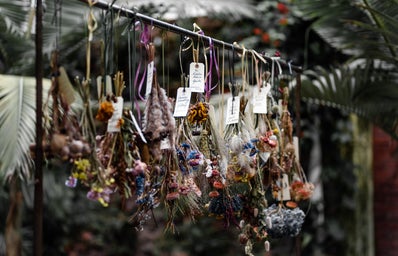Have you ever wondered what the difference is between Bugs, Insects, and Arthropods? Well, so did I! Which is why in McCain Library I made a display explaining those differences and other fun facts on our small little friends! Did you know the strongest material in the world is considered the silk that spiders create? Scientists haven’t been able to recreate this design even with all the technology we have today!
According to Dictionary.com, the word bug could be used to describe very small creatures with legs, however, it also explains that the real bugs we see belong to the animal kingdom order of Hemiptera. This order further defines these “very small creatures” as having “tough forewings and lack teeth,” and a “straw-like mouth” — think of your typical dung beetle. Insects also belong to their own class called Insecta. There typically described as having “three-part bodies,” “two pairs of wings,” and “three pairs of legs;” for example a sweet bumbling bee. Now Arthropods are something apart from bugs and insects. They’re typically what we would consider spiders, centipedes, ticks, etc. It’s not necessarily wrong to call all these little creature bugs since it’s what we commonly use in day to day talk.
I’ve gathered some of my favorite fun facts that are on display here for you to read:
Top 5 Facts on Honey Bees:
(According to http://www.utahcountybeekeepers.org/fun_facts.html)
-
Honey bees fly at 15 miles per hour.
-
Honeybees are the only insect that produces food for humans.
-
Honeybees are the only bees that die after they sting.
-
Honeybees will usually travel approximately 3 miles from their hive.
-
Honeybees are responsible for pollinating approx 80% of all fruit, vegetable and seed crops in the U.S.
Top 5 Facts on Beetles:
(According to http://justfunfacts.com/interesting-facts-about-beetles/)
-
Beetles have chewing mouthparts and often have powerful jaws.
-
Beetles use a variety of anti-predator adaptations to defend themselves.
-
Camouflage is common and widespread among beetle families, especially those that feed on wood or vegetation.
-
Most beetles are active at night, but some are active in daylight (especially if they have chemical defense).
-
Beetles are the most widely eaten insects, with about 350 species used as food, usually at the larval stage.
Top 5 Facts on Spiders:
(According to https://www.spidersworlds.com/facts-about-spiders/)
-
They are 7th in the world when it comes to diversity among their populations.
-
Most spiders don’t live in the bodies of water, only a few species. They are able to live in all other types of habitat.
-
There have only been one species identified as vegetarian the rest are all predators: Bagheera kiplingi.
-
The number of eggs a female delivers can be up to 3,000.
-
The blood of a spider is light blue in color.
So come by McCain Library to check out the display! We have so many books for you to read and check on these many topics. A lot of the books have beautiful illustrious if you want references for drawing. The display case is also filled with vintage items, preserved butterflies, and beetles. So don’t be afraid to come and visit the display. None of the preserved bugs will come to life to jump at you, I promise!


